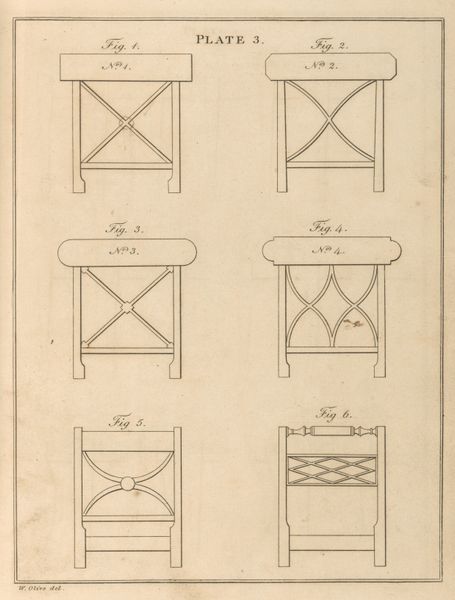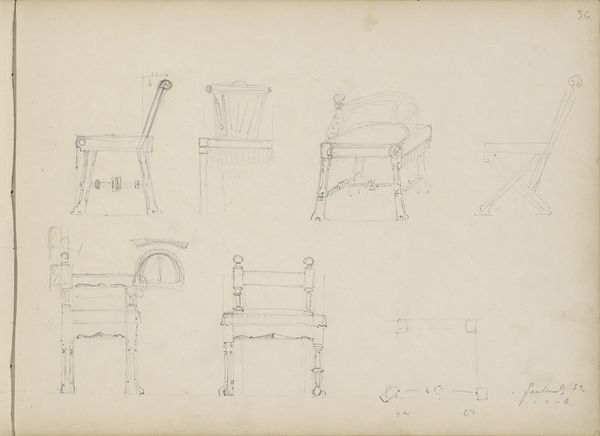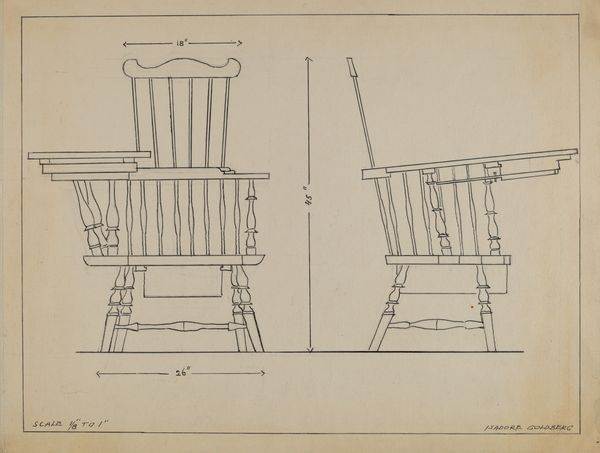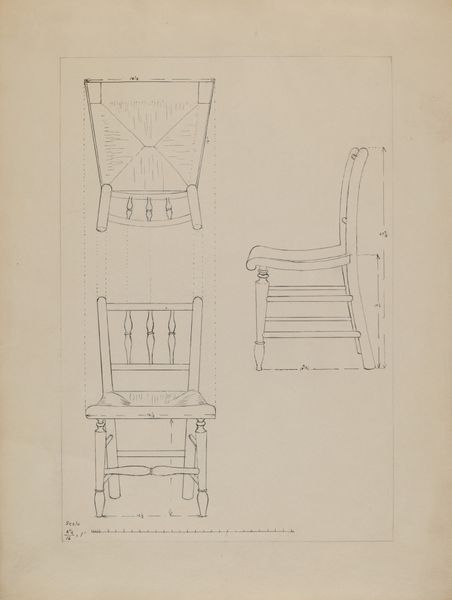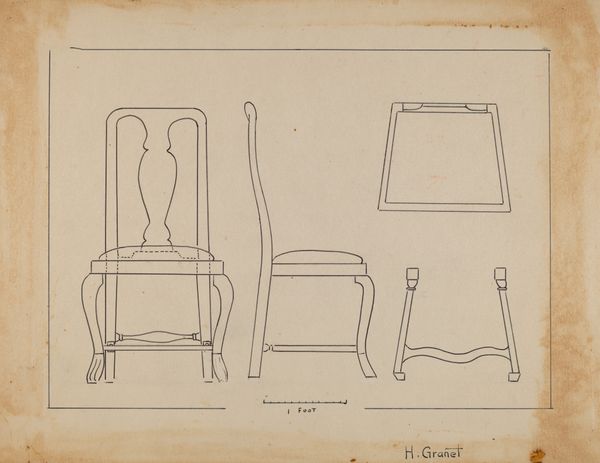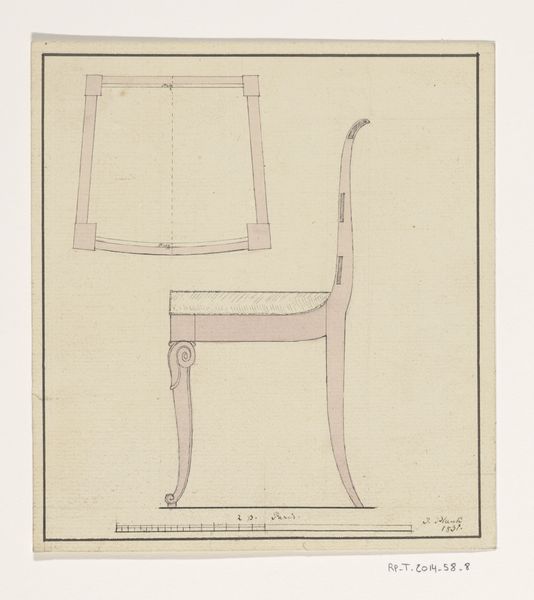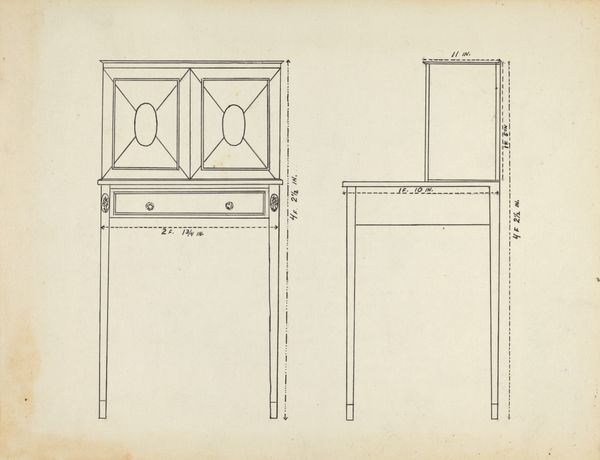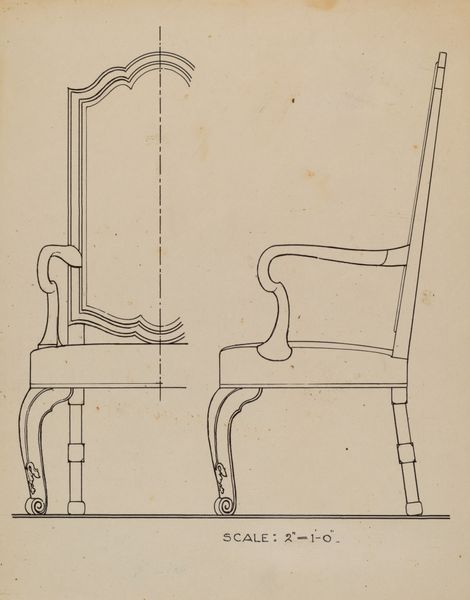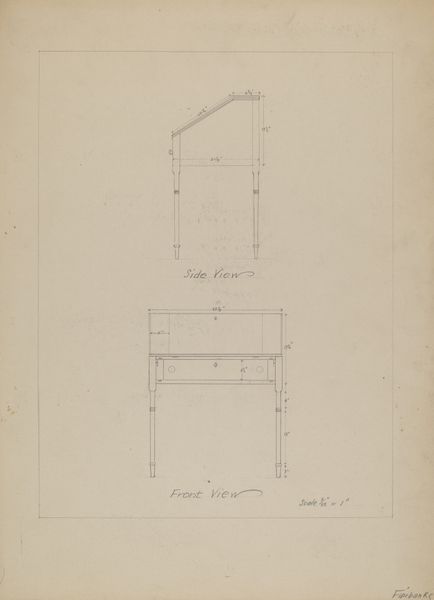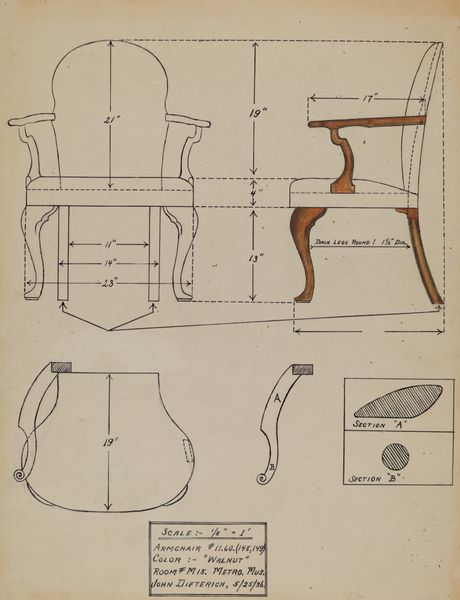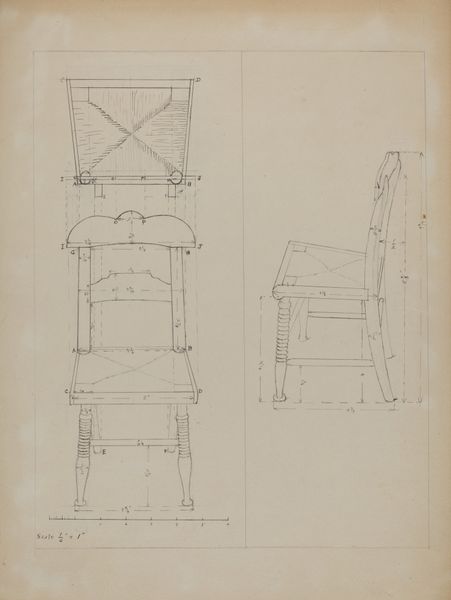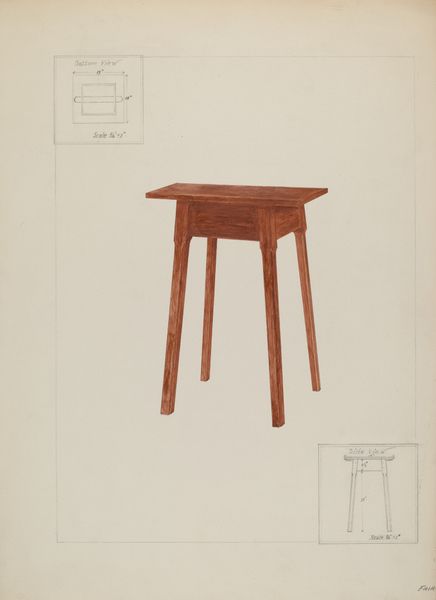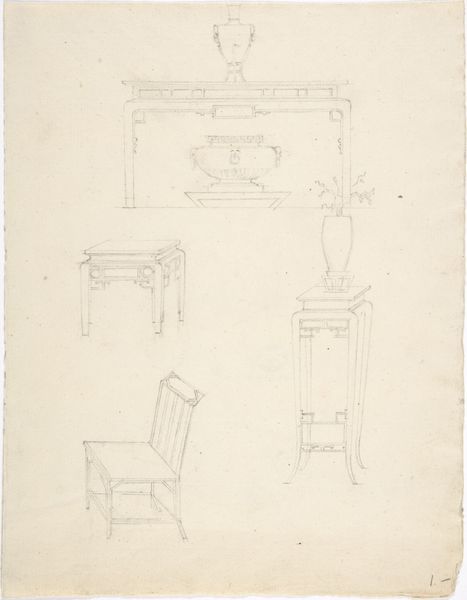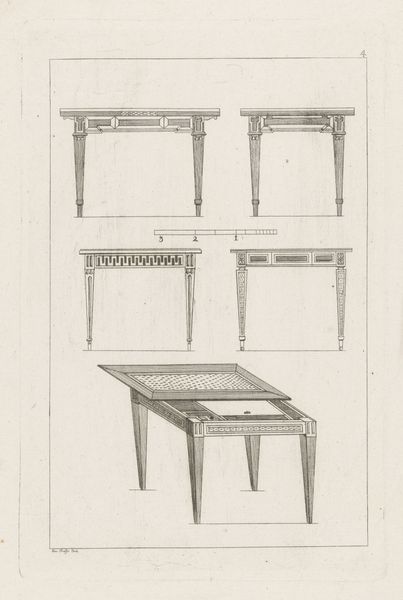
drawing, paper, pencil
#
drawing
#
aged paper
#
toned paper
#
light pencil work
#
light coloured
#
sketch book
#
paper
#
personal sketchbook
#
fading type
#
geometric
#
pencil
#
line
#
sketchbook drawing
#
fashion sketch
#
design on paper
Dimensions: overall: 29.9 x 23.3 cm (11 3/4 x 9 3/16 in.)
Copyright: National Gallery of Art: CC0 1.0
Editor: Here we have a delicate drawing entitled "Doll Chair," created around 1936, using pencil on paper. There’s a blueprint quality to it that I find charmingly utilitarian. How do you interpret this piece? Curator: It strikes me as an act of quiet resistance. This "Doll Chair," seemingly so small, speaks volumes about the societal roles prescribed to women in the 1930s. Do you see how this sketch, likely deemed unimportant, might represent a woman carving out a space for creativity within domestic constraints? Editor: I hadn't thought about it that way, but I see what you mean. It's almost like building a world in miniature, a subtle rebellion through design. So the act of drawing it is key? Curator: Absolutely. Consider the historical context. The 1930s were a period of economic hardship and shifting gender roles. While women were gaining more independence, they were still largely confined to the domestic sphere. This chair, seemingly insignificant, becomes a symbol of women's ingenuity and resourcefulness within those limitations. What kind of dialogue do you think that opens to our era of mass consumerism? Editor: So, even a simple sketch of a doll chair becomes a statement about the power of creation in a world trying to box people in. That’s fascinating. I never would have looked at it that way. Curator: Art has a unique voice. Now, imagine the conversations this object could spark around gender, labor, and design in today's context. Editor: It definitely gives me a lot to think about. Thanks!
Comments
No comments
Be the first to comment and join the conversation on the ultimate creative platform.
